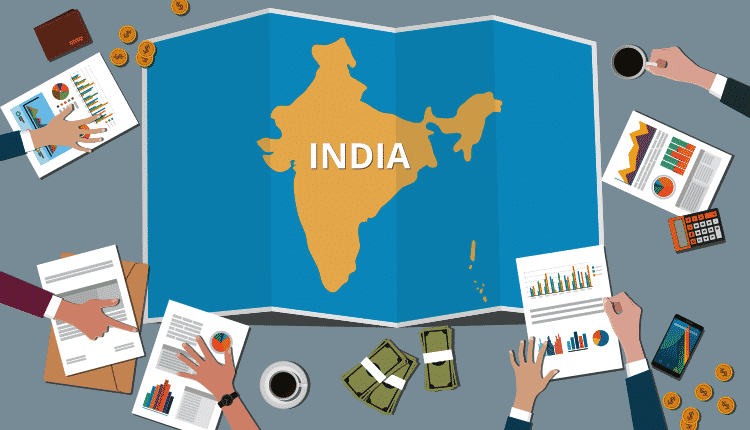
Quick Look
- India’s Composite PMI Hits an 8-Month High: The HSBC flash India Composite Purchasing Managers’ Index (PMI) soared to 61.3 in March, marking a significant expansion in business activity.
- Manufacturing Sector Leads Growth: The factory activity index reached its highest level since February 2008, highlighting the manufacturing sector’s crucial role in the economy.
- Inflation Concerns Persist: Despite strong growth, rising input costs indicate sustained inflationary pressures, potentially influencing future monetary policy decisions.
India concluded this fiscal year with outstanding vigour, expanding at the quickest pace in eight months during March. A business survey reveals this performance, positioning the country as the fastest-growing major economy worldwide. The HSBC flash India Composite Purchasing Managers’ Index (PMI), an early economic health indicator, increased to 61.3 from February’s final reading of 60.6. This growth marks the 32nd consecutive month of expansion, where scores above 50 signify growth. Leading this growth, the manufacturing sector, a key economic driver, saw the factory activity index rise to 59.2, a peak not observed since February 2008.
Manufacturing and Services: The Twin Pillars of Growth
The dynamism of the manufacturing sector is evident in the surge in factory goods demand, with new orders experiencing their most rapid expansion in over three years. This strong demand underscores India’s status as Asia’s third-largest economy and indicates a robust industrial sector. Meanwhile, the services sector, though slightly tempered, continued its strong performance with an index of 60.3 in March. The combined efforts of the manufacturing and services sectors fuel domestic growth and drive a significant increase in overall exports, which expanded at their fastest pace in seven months.
Increased price pressures have accompanied the economic upturn. Services firms faced the quickest rise in input costs in seven months, while the prices they charged saw the steepest increase since July 2017. Although manufacturers raised prices at a slower pace, input costs accelerated, suggesting that inflation could remain a concern. These inflationary pressures may constrain the Reserve Bank of India’s ability to reduce interest rates, even as the economy grows.
Outlook and Opportunities
India’s rapid economic expansion is noteworthy. Additionally, its vast domestic market lays the groundwork for ongoing growth. By 2030, forecasts indicate that India will rank as the world’s third-largest economy. This growth is fueled by a large population of 1.4 billion and a rising demand for electronic products.
Morgan Stanley’s report presents an optimistic view. It expects the domestic market for electronic products to reach US$92 billion by 2032. This projection is based on sustained consumer demand. Moreover, this optimism, when combined with business confidence for the coming year, indicates promising prospects. Despite inflationary challenges, there is fertile ground for growth in both the manufacturing and service sectors.
As India wraps up its fiscal year triumphantly, the interaction between sectors becomes crucial. The combination of manufacturing prowess and service sector resilience is key. Furthermore, careful management of inflationary pressures is essential. Together, these factors are pivotal in sustaining India’s status as the world’s fastest-growing major economy.
- SEO Powered Content & PR Distribution. Get Amplified Today.
- PlatoData.Network Vertical Generative Ai. Empower Yourself. Access Here.
- PlatoAiStream. Web3 Intelligence. Knowledge Amplified. Access Here.
- PlatoESG. Carbon, CleanTech, Energy, Environment, Solar, Waste Management. Access Here.
- PlatoHealth. Biotech and Clinical Trials Intelligence. Access Here.
- Source: https://www.financebrokerage.com/indias-pmi-surge-a-robust-end-to-the-fiscal-year/



